Beam Reach at Sea: Research on the Gato Verde
All the times we missed the orcas passing the Lime Kiln during our land-based research were about to be made up for…
Once we were aboard our catamaran home, our lives could basically revolve around the movement of the orcas, and it didn’t take long for that to begin. Since we started taking data on the whales right from day one, we had to take what we had learnt at the Lime Kiln and adapt quickly to data recording at sea.
“Permission to Deploy the Arrayâ€:
Once the whales were around us, we would deploy a four hydrophone array from the back of the boat and start recording. Laura listened to the calls and clicks being recorded in one minute time segments and recorded what she could hear on a phonation sheet so we could go back and listen to the best recordings afterwards. We also played the hydrophones through the speakers throughout the catamaran, so even those of us not working on the acoustics could have the full effect while we were with the whales.
The hydrophone array recording equipment (left) and the team preparing to record the whales on our first day (right).
“Two whales, 12 o’clock, 200 meters, traveling North!â€:
Sharon and I were on behaviour lookout. The idea was to call out every whale we saw with a clock bearing, a distance, and what activity they were doing, while Hayley wrote all this information down on a behaviour sheet. We were also specifically recording surface active behaviours (such as tail slaps and breaches) and foraging behaviour for our own projects. Sounds simple enough, but when you have anywhere from 5 to 50 whales in sight, 360 degrees around the boat, things got pretty crazy (but crazy in the best way possible, this is what we were here for!).
An orca breaching (left) and J26 – “Mike” swimming past the Gato Verde (right) during our data collection.
Since Beam Reach 112 had some of the most orca encounters while out on the water, this routine was continuously practiced and fine tuned, but every so often there were days without orcas where we could experiences some other aspects of life at sea.
While the orcas are away:
One of our other main focuses while living at sea was learning about sailing. We had lessons beginning with all the basic parts of a sail boat, and progressing through raising the sails, choosing an appropriate sailing course, steering, tacking and jibing, and learning the right of way rules. It was great experience going through all the steps required in order to sail, and to help eachother learn along the way. We even had the opportunity to sail with some near gale-force gusts making it all the more exciting.
Preparing to raise the main sail
We also quite often had some other playful cetaceans visit us while the orcas were out at sea. Dall’s porpoises would bow-ride infront of us, most often near the Lime Kiln. We would lie on the front on the boat and watch them swimming just a couple feet below us. Some would even turn on their sides to get a better look at us and then come up to give us a splash, seemingly on purpose. We even thought we could hear them clicking on our “listening hydrophone” we had deployed one day as they approached our stationary boat.
Dalls Porpoises Bow-Riding the Gato Verde
Other research we conducted while the orcas were away included CTD casts, which took the whole team to lower the CTD (an instrument used to obtain a depth profile of temperature, salinity, and various other water measurements) 60 meters into the water, and then use a winch to crank it back onto the boat. I also fished for salmon and analyzed fish finder data from the boat for my project while the orcas we away, and had great success doing so!
The CTD in the water (left) and the crew waiting to haul it back up (right)
Salmon fishing off the boat (left) and a successful catch of a juvenile Chinook (right).
Read More

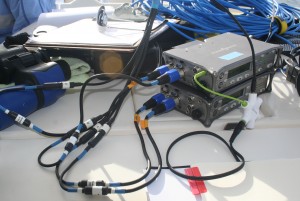
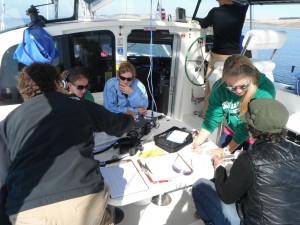
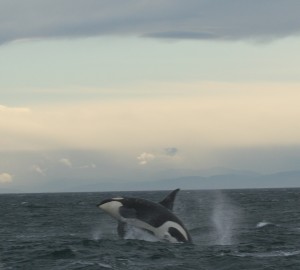
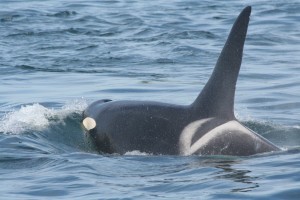
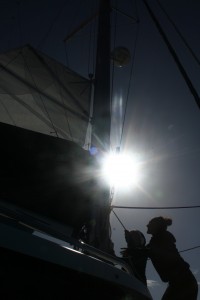
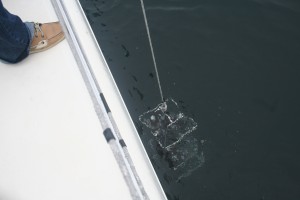
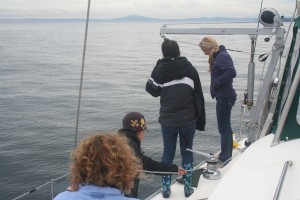
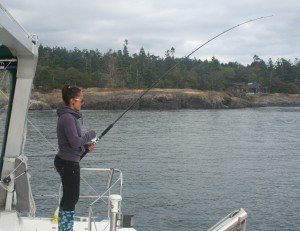
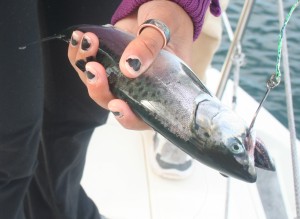


 Twitter
Twitter LinkedIn
LinkedIn Facebook
Facebook